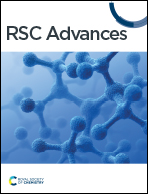Emerging tendencies for the nano-delivery of gambogic acid: a promising approach in oncotherapy
Abstract
Despite the advancements in cancer therapies during the past few years, chemo/photo resistance, severe toxic effects, recurrence of metastatic tumors, and non-selective targeting remain incomprehensible. Thus, much effort has been spent exploring natural anticancer compounds endowed with biosafety and high effectiveness in cancer prevention and therapy. Gambogic acid (GA) is a promising natural compound in cancer therapy. It is the major xanthone component of the dry resin extracted from the Garcinia hanburyi Hook. f. tree. GA has significant antiproliferative effects on different types of cancer, and it exerts its anticancer activities through various pathways. Nonetheless, the clinical translation of GA has been hampered, partly due to its water insolubility, low bioavailability, poor pharmacokinetics, rapid plasma clearance, early degradation in blood circulation, and detrimental vascular irritation. Lately, procedures have been invented demonstrating the ability of nanoparticles to overcome the challenges associated with the clinical use of natural compounds both in vitro and in vivo. This review sheds light on the recent emerging trends for the nanodelivery of GA to cancer cells. To the best of our knowledge, no similar recent review described the different nanoformulations designed to improve the anticancer therapeutic activity and targeting ability of GA.

- This article is part of the themed collection: 2024 Reviews in RSC Advances


 Please wait while we load your content...
Please wait while we load your content...